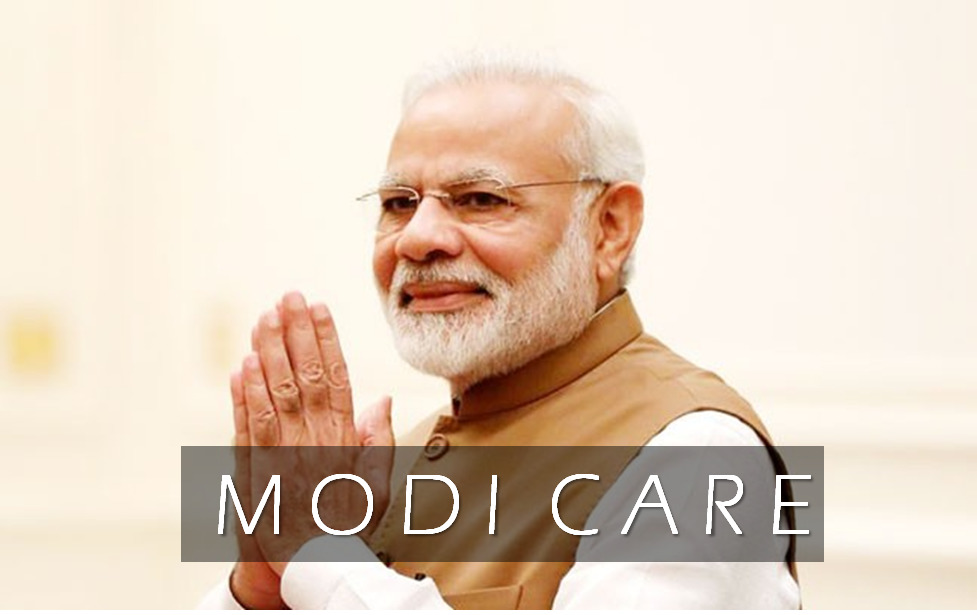Ayushman Bharat, the flagship healthcare scheme of Modi government, has completed 1 year since its launch by PM in Jharkhand. The scheme covers 10 crore poorest families of the country, or almost 50 crore people, and therefore is largest public healthcare scheme in the world. Currently it covers almost 40 percent population of the country but the government aims to expand it to bring three fourth of Indian population under the scheme.
#AyushmanBharat is more than just a healthcare scheme – it is a beacon of hope to more than 50 crore of India's most vulnerable people. It is breaking the vicious cycle of poverty & disease while making healthcare affordable and accessible. #SaalEkAyushmanAnek
— Narendra Modi (@narendramodi) September 23, 2019
The other government funded public healthcare schemes- Central Government Health Scheme (CGHS, Rashtriya Swasthya Bima Yojana, Employees’s State Insurance (ESI), and railways health policy will be subsumed under Ayushman Bharat umbrella. Almost all government funded healthcare program except the one for Armed Forces will be brought under Pradhan Mantri Jan Arogya Yojana (PM-JAY).
“The scheme is expected to expand to cover about 70 per cent of the population over time as both centre and states add several more vulnerable sections of the society to this cover,” said a study conducted by National Health Authority, the agency responsible for implementing PM-JAY.
PM-JAY offers treatments at 20 percent lower rates than the Central Government Health Scheme (CGHS) and Rashtriya Swasthaya Bima Yojana (RSBY) under what is touted as the famed Modicare. Indu Bhushan, chief executive of Ayushman Bharat said “CGHS and Rashtriya Swasthya Bima Yojana (RSBY) rates have been used as reference prices for fixing the rates under the Modicare scheme. However,the rates under the new scheme are on an average 15-20% lower than that of CGHS.”
CGHS is the existing medical care scheme for central government employees started in 1954 under the Ministry of Health and Family Welfare, while RSBY was started in 2008 by the Manmohan Singh government to provide health insurance coverage to people living Below Poverty Line (BPL).
Every state except Delhi, Telangana,and Odisha have either replaced their own health scheme with Ayushman Bharat or integrated it with the central government’s flagship initiative. “The response from states across India is phenomenal. Initially, there were challenges of convergence in those states who had their own health schemes, but now they are adequately addressed. With more than 25,000 admissions (of patients) per day, we have exceeded 40 lakh admissions under the scheme,” said Dr Indu Bhushan, Chief Executive Officer, Ayushman Bharat.
More than 18,000 hospitals including 9,000 government hospitals have registered under the Ayushman Bharat scheme. The 40 lakh patients treated under Ayushman Bharat saved 13,000 crore rupees out of pocket expenditure and the government has to spent only 6,500 crore rupees to cover the treatment.
Out of 43.93 lakh patients treated under the Ayushman Bharat scheme, 8.42 lakh were from Gujarat, 6.11 lakh from Tamil Nadu and 5.62 lakh from Chhattisgarh. It is evident that the state with better existing healthcare facilities has been more successful in implementation of the scheme. UP, Bihar and other Northern states which had poor public health record lag behind in implementation.
Public healthcare is in a dire state in the country, as the Congress Party which ruled the country for decades could not provide universal healthcare despite its repeated promises to do so in every election manifesto. Healthcare in the country has primarily been in private hands being very expensive, therefore most of the poor people are denied affordable care.
According to the draft of the National Health Policy, “Over 63 million people are faced with poverty every year due to healthcare costs alone. It is because there is no financial protection for the vast majority of healthcare needs.” Ayushman Bharat will curb the out of pocket healthcare expenditure and help people to come out of vicious cycle poverty and disease.
The poor and needy were earlier required to sell their assets in order to get quality healthcare or landed up borrowing money from Sahukars who levied heavy interests. The share of non-regular expenditure on healthcare in proportion to total household monthly per capita expenditure stood at 6.9 percent in rural areas and 5.5 percent in urban areas.
The scheme launched by Modi government is the largest health coverage in the world. It will provide 5 lakh rupees health insurance cover to 50 crore people, which is nearly 40 percent of the population of the country. Besides the insurance cover, the government will create 1, 50,000 wellness centers across the country under the Ayushman Bharat scheme. The families to get benefits of the scheme will be identified from the Socio-Economic and Caste Census (SECC), 2011 data.
